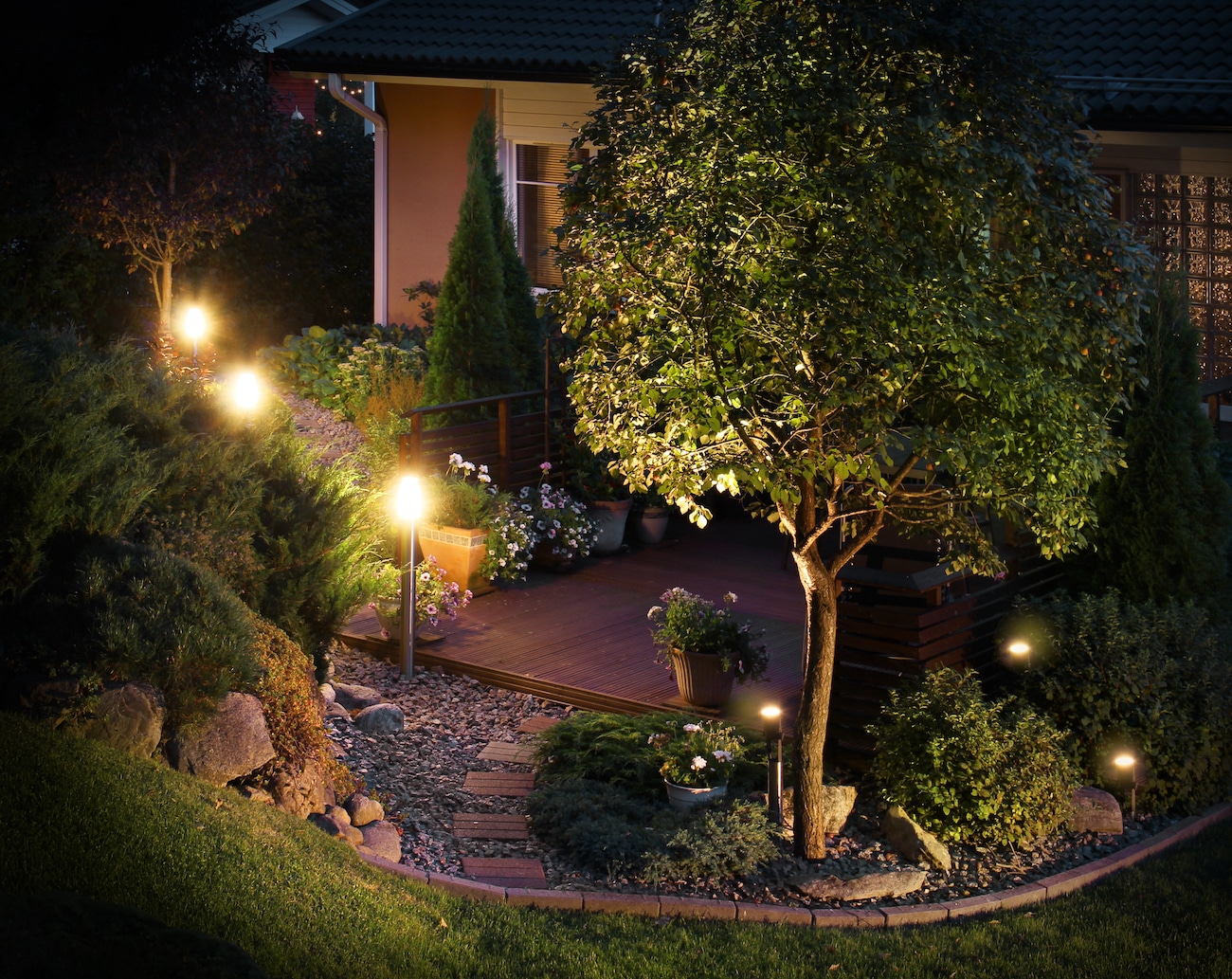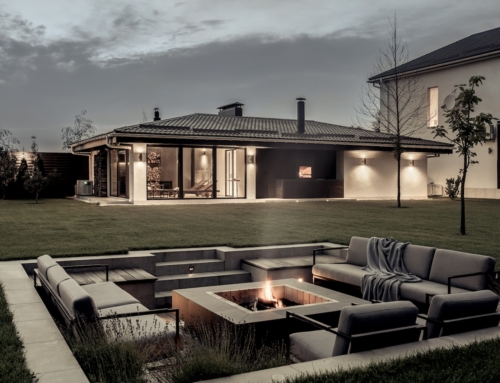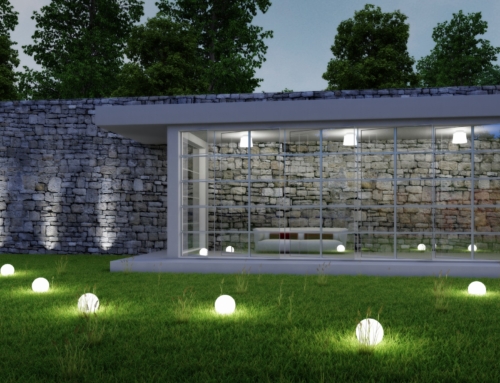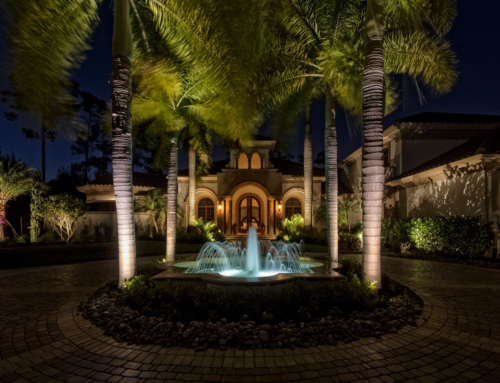Landscape Lighting in Florida’s Lush Settings
Florida, known for its lush tropical landscapes and balmy nights, offers the perfect canvas for landscape lighting. With the right illumination, your garden can transform into an enchanting oasis after sunset. Lets delve into the art of lighting tropical landscapes in Florida, offering practical tips and creative ideas to highlight the natural beauty of your outdoor space.
Understanding the Tropical Landscape
Tropical landscapes are characterized by their vibrant foliage, exotic plants, and distinctive textures. In Florida, this often includes an array of palm trees, ferns, flowering plants, and a rich undergrowth. The key to effective tropical landscape lighting is to accentuate these features while creating an inviting and warm ambiance.
The Role of Lighting in a Tropical Setting
- Highlighting Focal Points: Use lighting to draw attention to specific elements like statuesque palm trees, intricate plant arrangements, or water features.
- Creating Depth and Contrast: Properly placed lights can add depth to your garden, highlighting the layers of foliage and creating intriguing shadows.
- Enhancing Safety and Security: Illuminated paths and strategically lit areas improve visibility, aiding navigation and enhancing security.
- Setting the Mood: Lighting sets the mood for your outdoor space, whether you’re aiming for a serene retreat or a lively entertainment area.
Types of Lights for Tropical Landscapes
- Spotlights: Ideal for accentuating focal points like trees or architectural features.
- Pathway Lights: Ensure safe navigation while adding charm to walkways.
- Underwater Lights: Perfect for ponds and fountains, adding a magical touch.
- Bollard Lights: Provide broader illumination for larger areas while maintaining an aesthetic appeal.
Design Principles for Tropical Landscape Lighting in Florida
1. Layer Your Lighting
Incorporate a mix of ambient, task, and accent lighting. Ambient lighting provides overall illumination, task lighting focuses on specific areas like walkways, and accent lighting highlights key features.
2. Play with Shadows
Use directional lights to create intriguing shadows, adding a dynamic element to your landscape. The play of light and shadow can emphasize textures and shapes, bringing the tropical setting to life.
3. Color Temperature Matters
Choose warm white lights (around 2700K to 3000K) to complement the natural hues of a tropical landscape. Cooler temperatures can make the environment feel unwelcoming and stark.
4. Consider the Viewing Angle
Think about how each element will be viewed. Lighting should enhance the view from inside the house, various points in the garden, and from the street.
Installation Tips for Maximum Impact
- Strategic Placement: Position lights to avoid direct glare. Conceal light sources where possible to maintain a natural look.
- Balancing Light and Dark: Avoid over-lighting. The beauty often lies in the balance between lit areas and shadows.
- Energy Efficiency: Opt for LED lights for longer life and lower energy consumption.
- Waterproof and Durable Fixtures: Ensure all fixtures are suitable for Florida’s humid and sometimes harsh weather.
Innovative Ideas for Tropical Landscape Lighting in Florida
- Up-lighting Tall Trees: Place lights at the base of tall trees to cast dramatic shadows and illuminate the canopy.
- Accentuating Water Features: Use submersible lights in ponds or backlighting for waterfalls.
- Garden Path Lighting: Integrate low-level lights along paths for a subtle, enchanting effect.
- Highlighting Textures: Position lights to accentuate the unique textures of tropical plants.
Common Challenges and Solutions
- Saltwater Corrosion: In coastal areas, opt for corrosion-resistant fixtures.
- Dense Foliage: Use brighter lights or multiple fixtures to penetrate thicker foliage.
- Insect Attraction: Yellow or amber lights attract fewer insects, reducing the nuisance around entertaining areas.
Maintenance and Upkeep
Regular maintenance is crucial in a tropical climate. Clean lenses and fixtures to prevent dirt and moisture build-up, check for exposed wires, and replace any damaged fixtures promptly.
The Environmental Aspect
Be mindful of light pollution. Use timers or motion sensors to reduce unnecessary lighting, and direct lights downward to minimize sky glow.
Professional vs. DIY Installation
While DIY can be tempting, professional installation ensures safety, optimal placement, and a cohesive design. A professional can also provide valuable advice on the best fixtures and techniques for your specific landscape.
Wrapping Up
Tropical landscape lighting in Florida is not just about illumination; it’s about creating an atmosphere that complements the natural beauty of your surroundings. With thoughtful design and strategic placement, landscape lighting can turn your garden into a stunning nocturnal paradise, enhancing both the aesthetics and functionality of your outdoor space.
Get Inspired
For more inspiration, visit landscaping showcases, or consult with a professional designer. Remember, your tropical garden at night should be as inviting and beautiful as it is during the day.
Landscape lighting in Florida offers endless possibilities to enhance the beauty and enjoyment of your outdoor space. Whether you’re highlighting a majestic palm tree or creating a pathway through your garden, the right lighting can transform your landscape into a magical tropical haven.
If you’re wondering about nightscape lighting, trends, and what it would take to get your yard to the next level give us a call. We’re happy to talk through some options, explain more of the benefits, and let you look at some of our previous work. We think once you see the before and after’s, you’ll be ready to do a home makeover of your own.
Remember, this guide is a starting point. Each landscape is unique, and experimenting with different lighting options can help you discover the perfect setup for your tropical oasis.






